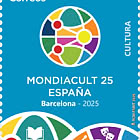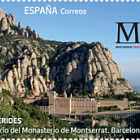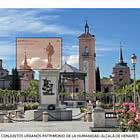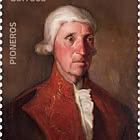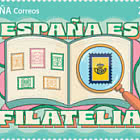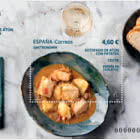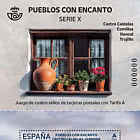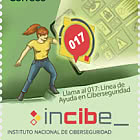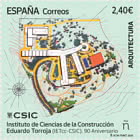María de la Encarnación Gertrudis Jacoba Aragoneses y de Urquijo (17 November 1886 in Madrid – 8 May 1952 in Madrid) was a Spanish author of children's literature who wrote under the pen name Elena Fortún. She became famous for Celia, lo que dice ("What Celia Says") the first in the series of children's novels which were a collection of short stories first published in magazines in 1929. The series were both popular and successful during the time of their publications and are today considered classics of Spanish literature.
She was the daughter of Leocadio Aragoneses, a yeoman of the Spanish Royal Guard from Segovia and her mother was Basque. Born in Madrid she spent her summers with her grandfather, Isidro, in Abades, a small village west of Segovia. She studied Philosophy in Madrid. In 1908 she married her cousin, Eusebio de Gorbea y Lemmi, a military man, intellectual and writer. They had two sons, the youngest, Bolín, died in 1920 at the age of 10 and she sank into a deep depression, at times trying to contact him through a Ouija board. Her younger son, who had lost an eye in a hunting accident, eventually married Ana María Link, a young Swiss student who was studying at the Residencia de Señoritas in Madrid. Encarna lived mainly in Madrid but also spent time in Tenerife in the Canary Islands, San Roque, Zaragoza, Barcelona, Valencia, France and Argentina.
Her husband, Gorbea, a playwright, was a member of the Generation of 1914 and introduced Encarnación to his circle of writers and artists. By the late 1920s she had decided to write and began writing for children in 1928 for the magazine Blanco y Negro under the pseudonym Elena Fortún, a name of one of her husband's characters. Her stories became so popular that the publishing house of Aguilar became interested and began putting them into print in 1935. Set in Madrid, these stories were told from the perspective of seven-year-old Celia Gálvez de Montalbán, a young girl who questions adults and the world around her in ways that were both ingenuous and innocent. She especially queried the educational system that sought to dampen the imaginations of young girls. Encarna knew how to excite the hearts, minds and dreams of children and these stories became favorites with Spanish girls during the 1930s through the 1960s.
Source: Wikipedia





